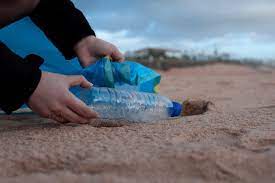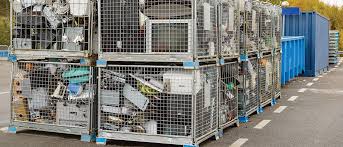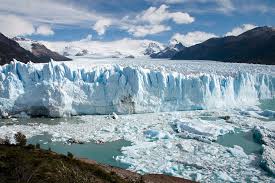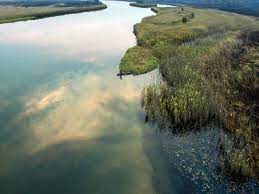Water Pollution Prevention
There are several ways of preventing water pollution. Some of them are discussed below:
Green agriculture
Globally, agriculture accounts for 70% of water resources, so it is essential to have climate- friendly crops, efficient irrigation that reduces the need for water and energy-efficient food production. Green agriculture is also crucial to limit the chemicals that enter the water.
Wastewater treatment
Wastewater treatment consists of removing pollutants from wastewater through a physical, chemical or biological process. The more efficient these processes are, the cleaner the water becomes.
Air pollution prevention
Air pollution has a direct impact on water contamination as 25% of human induced CO2 emissions are absorbed by oceans. This pollution causes a rapid acidification of our oceans, and threatens marine life and corals. Preventing air pollution is the best way to prevent this from happening.
Storm water management
Storm water management is the effort to reduce runoff of rainwater or melted snow into streets, lawns and other sites and the improvement of water quality‖ according to the US Environmental Protection Agency (EPA). It is important to avoid pollutants from contaminating the water and helps to use water more efficiently.
Plastic waste reduction
80% of plastic in our oceans is from land sources. In order to reduce the amount of plastic entering our ocean, we need to both reduce our use of plastic globally, and to improve plastic waste management.
Water conservation
Without water conservation, we won‘t go very far. It is central in making sure the world has better access to clean water. It means being aware that water is a scarce resource, taking care of it accordingly, and managing it responsibly.
Examples of the Development of National Water Quality Criteria and Guidelines
Nigeria
In Nigeria, the Federal Environmental Protection Agency (FEPA) issued, in 1988, a specific decree to protect, to restore and to preserve the ecosystem of the Nigerian environment. The decree also empowered the agency to set water quality standards to protect public health and to enhance the quality of waters.
In the absence of national comprehensive scientific data, FEPA approached this task by reviewing water quality guidelines and standards from developed and developing countries as well as from international organizations and, subsequently, by comparing them with data available on Nigeria’s own water quality.
Read Also : The Effects of Water Pollution
The standards considered included those of Australia, Brazil, Canada, India, Tanzania, the United States and the World Health Organization (WHO). These sets of data were harmonized and used to generate the Interim National Water Quality Guidelines and Standards for Nigeria.
These address drinking water, recreational use of water, freshwater aquatic life, agricultural (irrigation and livestock watering) and industrial water uses.
The guidelines are expected to become the maximum allowable limits for inland surface waters and ground waters, as well as for non-tidal coastal waters.
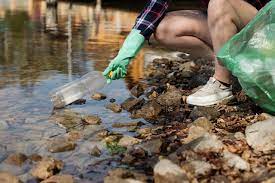
They also apply to Nigeria’s trans-boundary watercourses, the rivers Niger, Benue and Cross River, which are major sources of water supply in the country. The first set of guidelines was subject to revision by interested parties and the general public.
A Technical Committee comprising experts from Federal ministries, State Governments, private sector organizations, higher educational institutions, nongovernmental organizations and individuals is now expected to review the guidelines from time to time.
Papua New Guinea
In Papua New Guinea, the Water Resources Act outlines a set of water quality requirements for fisheries and recreational use of water, both fresh and marine.
The Public Health Drinking Water Quality Regulation specifies water quality requirements and standards relating to raw water and drinking water.
The standards were established in accordance with WHO (World Health Organization) guidelines and data from other tropical countries.
Vietnam
In Vietnam, the water management policy of the Government highlights the need for availability of water, adequate in quantity and quality for all beneficial uses, as well as for the control of point and non-point pollution sources.
The Government is expected to draw up and to update a comprehensive long-term plan for the development and management of water resources.
Moreover, an expected reduction in adverse impacts from pollution sources in upstream riparian countries on the water quality within the Mekong River delta will be based on joint studies and definitions of criteria for water use among riparian countries of the river.
A set of national water quality criteria for drinking-water use as well as criteria for fish and aquatic life, and irrigation have been established (ESCAP, 1990). Criteria for aquatic life include: pH (range 6.5-8), dissolved oxygen (> 2 mg l-1), NH4-N (< 1 mg l-1), copper (< 0.02 mg l-1), cadmium (< 0.02 mg l– 1), lead (< 0.01 mg l-1) and dissolved solids (1,000 mg l-1).
More recently, allowable concentrations of pesticides in the freshwater of the Mekong delta have been established by the Hygiene Institute of Ho Chi Minh City as follows: DDT 0.042 mg l-1, heptachlor 0.018 mg l-1, lindane 0.056 mg l-1 and organophosphate 0.100 mg l-1. According to Dung (1994), the actual concentrations of these pesticides during the period June 1992 to June 1993 were considerably below these criteria.
In summary, improper disposal of pesticides from field farms and excessive fertilizer application contribute a lot of pollutants to water bodies and soils.
Contamination from sewage outfall pipes, from dumping of sludge or other wastes, and from oil spills can harm marine life. Point sources of pollution are those which have direct identifiable source.
Read Also : Industrial Wastewater Treatment Process
Water pollution affects plants and organisms living in these bodies of water and in almost all cases the effect is damaging not only to individual species and populations, but also to the natural communities.
Water bodies can be polluted by a wide variety of substances, including pathogenic microorganisms, putrescible organic waste, plant nutrients, toxic chemicals, sediments, heat, petroleum (oil), and radioactive substance.
